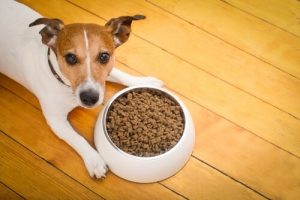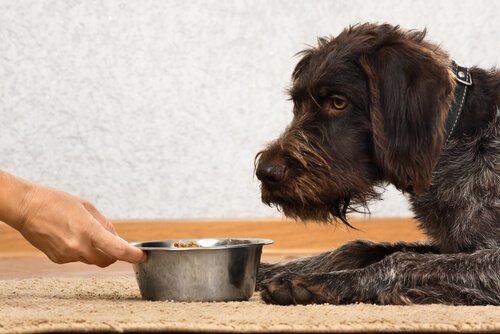How to change your dog's food

Changing your dog’s food
You may have to periodically change your dog’s food for several reasons. Whether it being his health, diet, or to bring variety to his food, a pretty simple procedure should be followed.
Varieties of dog food
Dog food comes in different shapes and flavors that suit all animal personalities. The food is also divided into different life stages according to the animal’s nutritional needs.
Every so often a dog’s should be changed to keep him from getting bored of the same tastes, or to keep up with the stage of growth your dog is at, from puppy to adult or from adult to senior.
The process can be quite simple or it can be tedious, the question depends a lot on your dog’s personality. Your dog may or may not like a certain brand of dog food and, if he doesn’t like the switch, he may protest by not eating.
This is why many first-time pet owners have problems when making this change. However, there is no need to worry because by reading this article, you’ll learn the best tips to correctly make this change without having any problems.

The way to change a dog’s food
The process is very simple and can take place around one to two weeks. The technique consists of gradually mixing the new food in with the old food. This will help your pet get used to the new flavor.
- During first two days, make a mixture 25% new food and the rest with his old food.
- On the third and fourth day, mix 50% of each type of food.
- On the fourth and fifth day, the mixture should be made up 75% of the new food and only 25% of the old food.
- Finally, on the seventh day, it should be 100% of the new food.
Depending on your dog, the process may take up to three weeks. If this is the case, you should make the change less abrupt when adding in the new food:
- The first two days should be a mixture of 10% of the new food and 90% of the current food.
- On the third and fourth day, the new food should be 20% and the current food will drop to 80%.
- During the fifth and sixth day, you should make the mixture 30% of the new food and 70% of the current food.
- On the seventh and eighth days, it should be 40% of the new food and 60% of the previous food.
- Between the ninth and tenth day, the mixture should be made up of 50% of each food.
Continue this process until your dog accepts his new food by the 20th day. Gradually increase the percentage so there is not such an abrupt change in his diet.
Why should it be done like this?
Each dog’s metabolism is different. So, to prevent him from having a negative reaction or to keep an ingredient from hurting him, you should gradually add it in his food. This is also done so that your dog can grasp the taste of the new flavor without him complaining or not complain that much while he is adjusting to the new food.

When it comes to putting medicine inside your dog’s food, you should follow the same plan. Let your pet get used to the new flavor and know that an extra ingredient is being added to his food.
If he has any negative side-effects, such as irritation or diarrhea, you should take him to the vet immediately. It’s very likely that some ingredient in the new food is hurting your pet.
Plus, it’s not advisable to lower the food quality. The cheapest food is usually processed with vegetable proteins, which are harmful to your dog’s digestive tract. The quality and taste could also be very different from his current food, and he will not like it.
Also keep in mind
Dog food is usually dry, so your pet may be thirsty while he eats it. Remember to keep water close by his food bowl in order to prevent choking.
If you are making the transition from organic food to dog food, the process is also the same. You should wet the food a bit before feeding it to your dog, since this will simulate the texture of organic food.